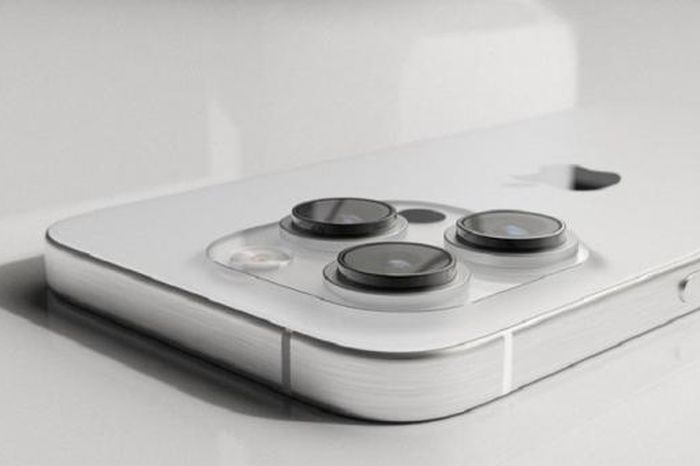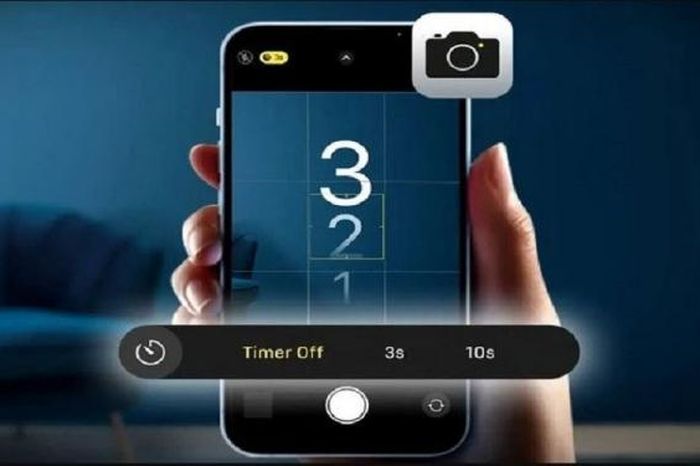Simple ways to enhance network signal for iPhone
Like any other phone, mobile network signal on iPhone is very important. If your iPhone often suffers from unstable and weak network signals, you will likely encounter many annoying problems, from dropped calls to limited online performance.
This can be especially disruptive when you're expecting important messages or need to make calls in an emergency.

Simple ways to enhance network signal for iPhone
Your iPhone is in a situation where the network signal is weak or unstable. You can apply some of the following simple tips to quickly fix this situation:
Restart your phone
If you often move, your iPhone will have difficulty catching waves with nearby mobile broadcast stations or with strong signal strength. The best way to solve this problem is to restart the iPhone. Restarting the system will force your iPhone to search for the best signal spots in the surrounding area.
Plus, restarting can also help clear up any temporary glitches or problems that affect your iPhone's ability to maintain a stable connection.
Use the Wi-Fi Calling feature
Wi-Fi calling allows iPhone users to make and receive calls and send text messages using a Wi-Fi connection instead of the cellular network. This revolutionary technology has been beneficial in areas with weak network signal strength or intermittent network signals but with an Internet connection.
Unfortunately, this feature is not a long-term solution if you are on a limited internet plan, because if you use Wi-Fi for work, Wi-Fi calling will consume a lot of money. more of your internet bandwidth, slowing down the performance of web browsing and other network tasks.
To activate the wi-fi calling feature, go to Settings > Phone > Wi-Fi Calling > switch to ON to activate.
Change the way you hold your iPhone
The way you hold your iPhone can also affect the device's network signal. iPhone has an antenna built into the body of the device. Therefore, it is possible that the position where you hold the iPhone is the position of the antenna, so your hand accidentally blocks the device's network signal, causing poor network signal reception. Therefore, determine the antenna position of the iPhone you are using and avoid covering it when holding it.
However, the antenna position arranged by Apple is not the same on all iPhone models. Some iPhone models have antennas on the sides, while others are near the rear camera. Additionally, if you are using cases that are thick or have metal components, they may hinder mobile signal reception.
Make sure that your iPhone battery has plenty of capacity left
In general, a weak battery will affect the iPhone's overall performance, including cellular signal reception. Therefore, you should maintain your iPhone's battery life at a high level and, if possible, always carry a charger or spare charger for emergency use.
Additionally, there are many ways to help your device save energy. Some of the best ways to save battery are to reduce screen brightness, turn off unnecessary app notifications, close background apps, and only use Bluetooth or NFC when necessary. Even if newer iPhones have longer battery life, saving energy should be a good habit to maintain the life of your device.
Clean the sim tray or change to a new sim
SIM cards allow mobile users to make calls, send messages, and evolving technology can even let you connect to the internet using mobile data. In case the SIM tray or SIM card is dirty, it can also cause the iPhone to not receive mobile signal or reduce the network signal strength. Try removing the sim tray and sim card from the iPhone, then clean it with alcohol or warm water. Then dry it and plug it back into the iPhone to see if it improves the iPhone's reception. If the sim tray or sim card is damaged or broken, you should replace it.
Keep your iPhone up to date
iOS updates released by Apple for iPhone typically provide security and performance improvements, including network connectivity. Therefore, ignoring these updates may lead to connection errors or the mobile signal reception function not working optimally, affecting the device's mobile signal reception. .
Weak network signal on iPhone is no longer a problem when you apply the simple tips above. Try it now and experience the improvement!
You should read it
- Compare iPhone 13 and iPhone 12
- iPhone 12 marks 13 years of change for Apple
- Compare iPhone 13 Pro and iPhone 12 Pro
- How has the iPhone evolved, from 2007 to 2017?
- Should I upgrade my iPhone X to iPhone 13?
- Should iPhone 7, 7+ update iOS 14?
- The difference between iPhone 6S and iPhone 6S Plus?
- 6 steps not to be missed when choosing to buy an old iPhone
- Latest images of iPhone X, iPhone X Plus next generation, iPhone 6.1 inch, 4GB RAM and 2 batteries
- 7 reasons why you should buy iPhone X instead of iPhone 8
- Let's look back at all the iPhone generations Apple has launched over the past decade
- Summary of errors on the iPhone 12 series
May be interested

Huawei Pura 70 launched, powerful camera design

Nearly 100,000 recycled iPhones were stolen

Instructions on how to use Mail on iPhone extremely well and conveniently

The camera on iPhone 16 Pro will have a breakthrough upgrade

iPhone shows Home notification, how to turn it off?

How to set a timer to take photos on iPhone is extremely simple and not everyone knows






 How to speed up Wifi network, increase WiFi signal
How to speed up Wifi network, increase WiFi signal 5 tips to help make optimal use of Tomato on the Router
5 tips to help make optimal use of Tomato on the Router iPhone may have a signal loss error after updating to iOS 14.7
iPhone may have a signal loss error after updating to iOS 14.7 How strong is the wireless signal in your Wi-Fi network?
How strong is the wireless signal in your Wi-Fi network? Signal Processing (Signal Handling) in C ++
Signal Processing (Signal Handling) in C ++ Instructions for deleting connected Wi-Fi addresses on iPhone
Instructions for deleting connected Wi-Fi addresses on iPhone